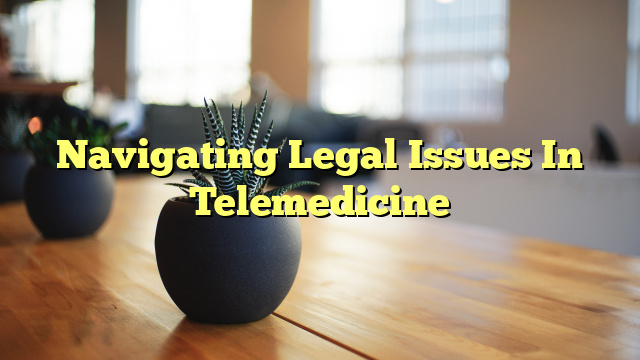Table of Contents
Legal Risks of Telehealth
Telehealth, or the provision of healthcare services remotely through technology, presents several legal risks that healthcare providers must be aware of. One major risk is the potential violation of privacy and security regulations, such as the Health Insurance Portability and Accountability Act (HIPAA). Providers must ensure that patient information is properly protected and transmitted securely.
Another legal risk is the potential for misdiagnosis or improper treatment due to limitations in remote examinations. Providers must exercise caution and follow best practices to minimize the risk of errors in diagnosis or treatment.
Ethical Issues with Telemedicine
Telemedicine also raises several ethical concerns. One major issue is the potential for unequal access to healthcare. Not all patients may have access to the necessary technology or internet connection to participate in telemedicine visits, which could create disparities in healthcare access.
Another ethical concern is the establishment of a proper patient-provider relationship. Building trust and maintaining confidentiality can be more challenging in a remote setting, and providers must take extra care to establish and maintain a strong therapeutic relationship with their patients.
Medicolegal Issues Associated with Telehealth
Two major medicolegal issues associated with telehealth are licensure and liability. Providers must ensure they are properly licensed to practice in the state where the patient is located. This can be complex, as each state has its own licensing requirements and regulations.
Liability is another concern, as telehealth introduces new risks and challenges. Providers must understand the potential legal implications of their actions and take appropriate steps to mitigate liability risks.
Challenges of Telemedicine Implementation
Implementing telemedicine services can be challenging for healthcare organizations. One major challenge is the integration of telehealth technology with existing systems and workflows. This requires careful planning and coordination to ensure a smooth transition.
Another challenge is ensuring the privacy and security of patient information. Healthcare organizations must have robust cybersecurity measures in place to protect patient data from unauthorized access or breaches.
Conclusion
While telemedicine offers many benefits, it also presents various legal and ethical challenges. Healthcare providers must be aware of these risks and take appropriate measures to navigate them effectively. By understanding the legal and ethical issues, addressing medicolegal concerns, and overcoming implementation challenges, healthcare organizations can successfully integrate telehealth into their practice and provide high-quality care to patients.

